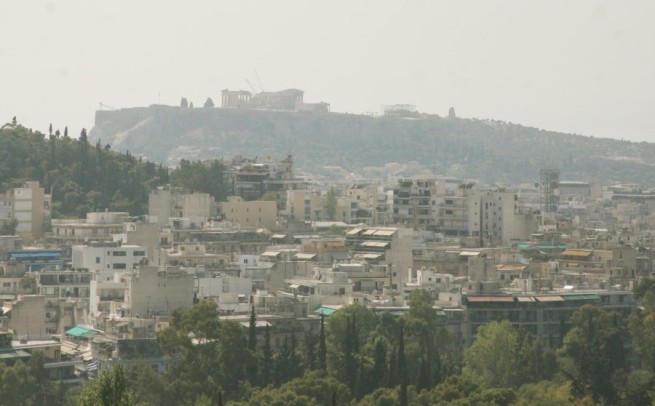Due to climate change, people around the world are increasingly plagued by heat waves, and air conditioning seems to be the only salvation. Perhaps there are alternative solutions?
Scientists propose to widely use passive cooling. What is it, tells Deutsche Wellereferring to experts.
This summer of 2022 will surely be remembered for the wave of abnormal heat that swept across Europe, took the lives of hundreds of people and forced governments in different countries to take different measures. In the UK, for example, for the first time in history, they declared a “red” alert level due to extremely high temperatures. Schools were closed in the country and even railway traffic was stopped on certain routes. The abnormal heat has caused forest fires in Spain and Portugal, Italy and France, Germany and Greece.
Due to climate change, the heat is increasingly turning on air conditioners, which diligently consume electricity. In 2018, according to the International Energy Agency, the use of air conditioners and electric fans accounted for 10% of global electricity consumption. At the same time, air conditioners are not widely used in all countries, such as in Japan and the USA, where 90% of households are equipped with them. And in the hottest parts of the world, only 8% of the population has access to them.
However, as temperatures rise, so does the demand for space cooling. By 2050, the level of electricity demand may increase by more than 3 times. This will lead to the fact that just as much energy will be used for cooling buildings as is currently spent in China and India as a whole.
Scientists propose to turn to the so-called passive cooling. That is, to control the temperature without using energy or consuming it minimally. Alexandra Rempel, Associate Professor of Environmental Design at the University of Oregon in the US, says:
“Passive cooling is promising because it’s a very cheap method to avoid heat islands in cities and dependence on air conditioners. It also offloads the power grid.”
In the Mediterranean, keeping windows open at night helps to survive the intense heat. You can let in cool air at night and close the shutters and curtains tightly during the day, protecting you from the bright sun and high temperatures.
Rempel is the author of a study showing that natural ventilation and shading can reduce indoor temperatures by about 14 degrees, thus reducing the load on air conditioners by up to 80%. The study used data from the 2021 hot wave, which covered a region traditionally famous for its mild climate – the Pacific Northwest. That year, however, heat casualties numbered in the hundreds.
Rempel also recalls the ancient methods of cooling rooms: they can bring a tangible effect, but if used correctly. Passive cooling can be considered when designing a building. For centuries, for example, wind towers in the Middle East and North Africa have prevented buildings from heating up. They are installed above buildings and “catch the wind”. With their help, fresh air enters the room, and warm air is pushed out again. Although traditional wind towers are now practically not used, it is quite possible for modern buildings to equip them with analogues.
Techniques that help maintain acceptable temperatures inside buildings include sunblinds, double glazing, and water fountains that lower the air temperature through evaporative cooling.
A study from the British University in Dubai has convincingly shown that residential buildings in the UAE can reduce their annual energy consumption by more than 20% using passive cooling methods. A striking example of such a building is the California Academy of Sciences in San Francisco: special ventilation effectively uses natural air currents, the green roof acts as a kind of insulating layer, opening and closing shutters on the windows regulate the heating of the room during the day.
Passive cooling helps not only to reduce the temperature inside the room, but also helps to cool the surface of buildings. Agree, among concrete buildings it is difficult to find a cool corner. Rampel explains:
“Streets and sidewalks simply accumulate heat all day long. Because these materials store heat, they generously release it into the environment during the night.”
Each country solves this problem in its own way. In Medellin (Colombia), for example, they built “green corridors” for cyclists and passers-by, plants protect them from direct sun. Only with the help of this simple solution, the average temperature in the city decreased by 2 degrees.
Indian design studio Niraj Doshi Design Consultancy recently unveiled a stunning home in Pune, India that demonstrates that green spaces are so much more than just decoration. Built for an extended family of six, Hovering Gardens is a great example of how the combination of natural materials such as stone and plants can create modern energy saving housein harmony with nature.
Considering India’s hot and humid climate, the architects designed the home with a few passive elements, such as cantilevered balconies that float above the spaces below. They are covered with hanging vegetation that helps protect the interior from harsh sunlight. The house has several vertical blinds that provide not only the necessary level of protection from prying eyes, but also air ventilation and natural lighting in the living quarters.
And in Tokyo, they took care of the excessive heating of the sidewalks and lowered their temperature to cool with the help of an insulating coating. In Singapore, dense vegetation on skyscrapers reduces the heating of buildings. Ayu Sukma Adelia, architect at Cooling Singapore research project, says: “With at least 10 meters of green space on the front of a building, the surface temperature of the building can be reduced by five degrees.”







More Stories
Calculation of benefits and Easter gift from April 19
AADE: What you need to know about the heating allowance credited to your energy bills
The war casts a heavy shadow on the global economy